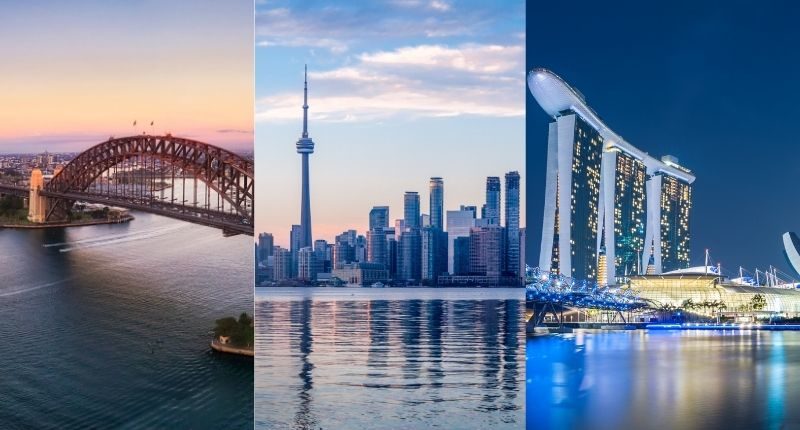- Joint survey lists the top ten countries to live in based on 76 attributes
- Bloomberg lists countries based on 'Covid Resilience'
- Australia is in top ten on both lists, but does not make number one
It is no secret Australia has lived to its reputation of being the ‘lucky country’ over the past year.
While no country in the world is perfect, Australians have had it pretty good. The economy is booming, unemployment is relatively low, and we enjoy relatively long life expectancy. Generally speaking, the nation has handled the pandemic better than most.
But does being ‘lucky’ make us one of the best countries in the world to live in?
In two rankings we are considered one of the best – but not the number one.
(Almost) the best
Recent analysis conducted by a partnership between US News & World Report, BAV Group and the Wharton School of the University of Pennsylvania has listed the best overall countries to live in.
The ranking is based on a variety of metrics such as agility, entrepreneurship, quality of life, distinctive and dynamic features, social purpose, cultural influence, open for business mentality, and with a smaller weighting given to categories such as power, adventure and heritage.
All these metrics equate to 76 individual attributes which were then standardised to rank the countries. Demographically, respondents of the survey were broadly representative of the population. 17,326 individuals were surveyed from 36 countries in four regions – the Americas, Europe and the Middle East & Africa.
The Top Ten
- Canada
- Japan
- Germany
- Switzerland
- Australia
- United States
- New Zealand
- United Kingdom
- Sweden
- Netherlands
Many of these countries are not surprises; they are all known to be wealthy with a high level of both Gross Domestic Product per capita.
Notably, Japan and the US are the only countries on the list with a population greater than 90 million. New Zealand has the lowest population, with only around 5 million people, while Australia’s 25 million population puts it mid-table.
Surprisingly, many Scandinavian countries that are often known for their high standards of living do not make this top ten; although Sweden, Norway and Finland are in the top twenty.
Japan is the only country from Asia in the top ten, with Singapore ranked number 14.
Many of these countries experienced significant Covid outbreaks – notably the United States and the United Kingdom.
“Nations are impacted on many critical fronts by how they are perceived globally – from foreign relations to international business to tourism. These perceptions are ever-evolving in a rapidly changing world.”
Kim Castro, Editor and Chief Content Officer U.S. News
“This year the model behind the Best Countries report has been updated and evolved in response to 2020, a year like no other,” said John Keaveney, WPP advisor and head of Analytics & Insight for BAV Group.
“From the death of George Floyd and the subsequent rise of the social justice movement, to the need for quick and decisive action by our governments and scientists to tackle the threat from COVID-19, all such seismic events now play a role in the way citizens rate a nation and its society as a whole.
“By combining more traditional measures of a nation’s power and influence with our new dimensions of Social Purpose and Agility, we are now able to more accurately measure the strength and perceptual equity of any country in 2021.”
John Keaveney, BAV Group
For those curious, the bottom country was Iraq – the war-torn country was not even listed last year.
Bloomberg’s Rankings
Bloomberg took a different approach to rank countries. It recently published its ‘Covid Resilience Ranking’ which is not necessarily based on a country’s standard of living, although there are several overlapping countries.
The list uses various factors to determine the best and worst places in the world during this pandemic era, such as vaccinations, fatality rates, cases per 100,000 and relative normalcy.
Despite being a small, high-density country – there are 7.8 people per square metre in the city state – Bloomberg says Singapore has successfully reduced local transmissions to zero thanks to its strict quarantine program.
This has allowed Singaporeans to go freely about their daily lives, including attending large concerts and even going on cruises. Currently, a fifth of the population has been vaccinated – something Australia, New Zealand and Taiwan are falling behind with. Singapore also enjoys a 0% fatality rate from COVID.
- Singapore
- New Zealand
- Australia
- Israel
- Taiwan
- South Korea
- Japan
- UAW
- Finland
- Hong Kong
With Singapore, Australia and New Zealand making the top three, talk of travel bubbles between the countries has been mooted. Australia and New Zealand started their own travel bubble on 19 April.








